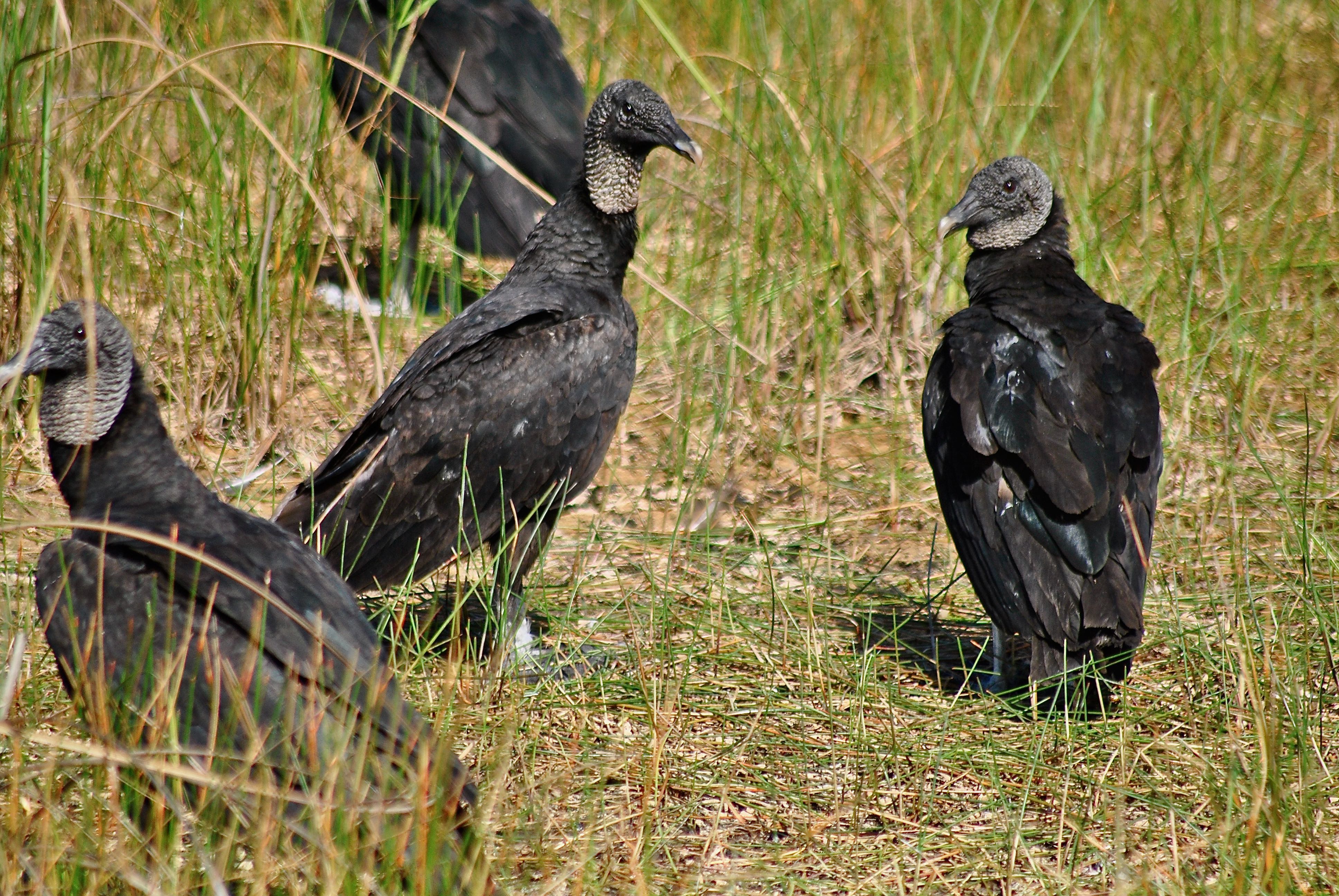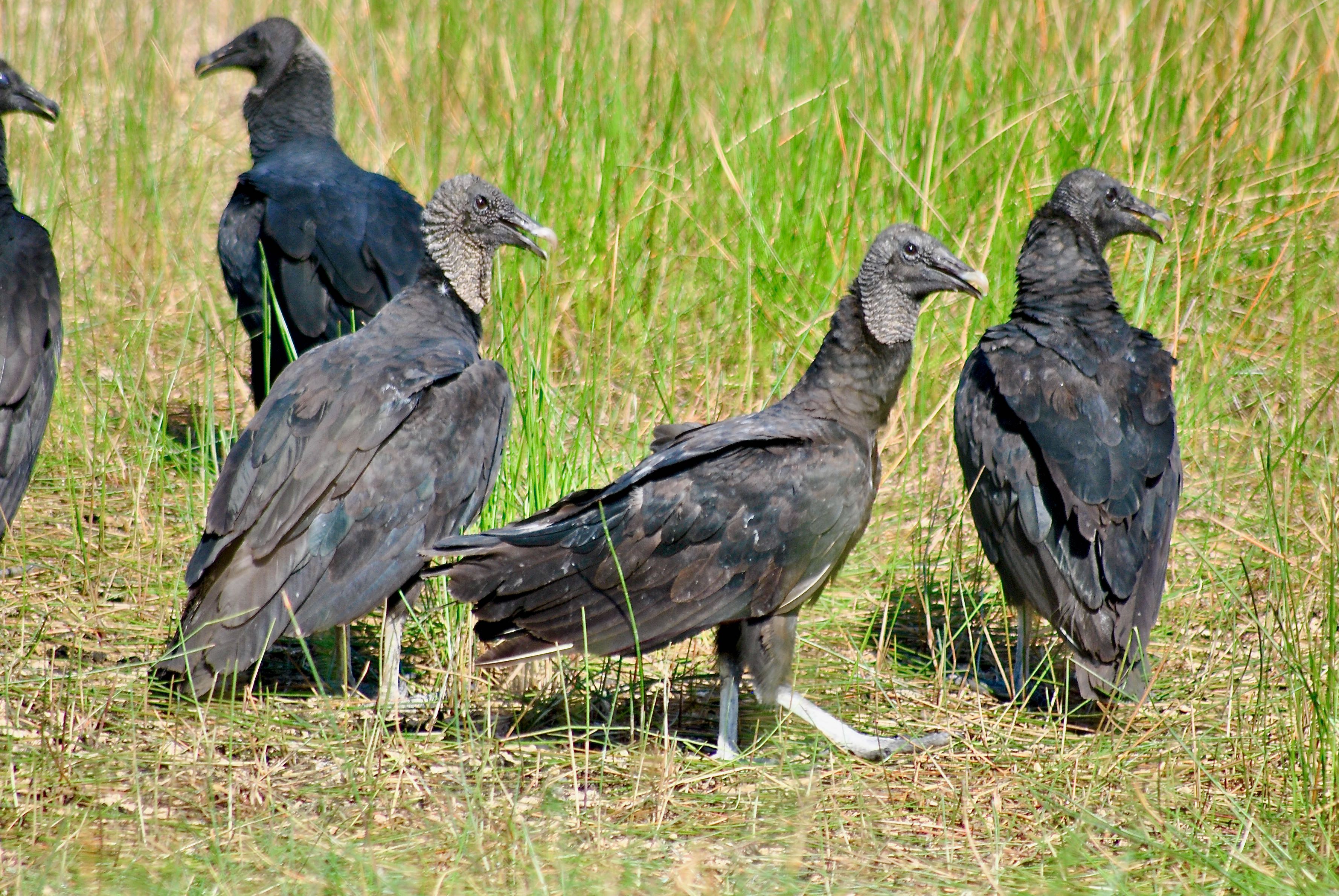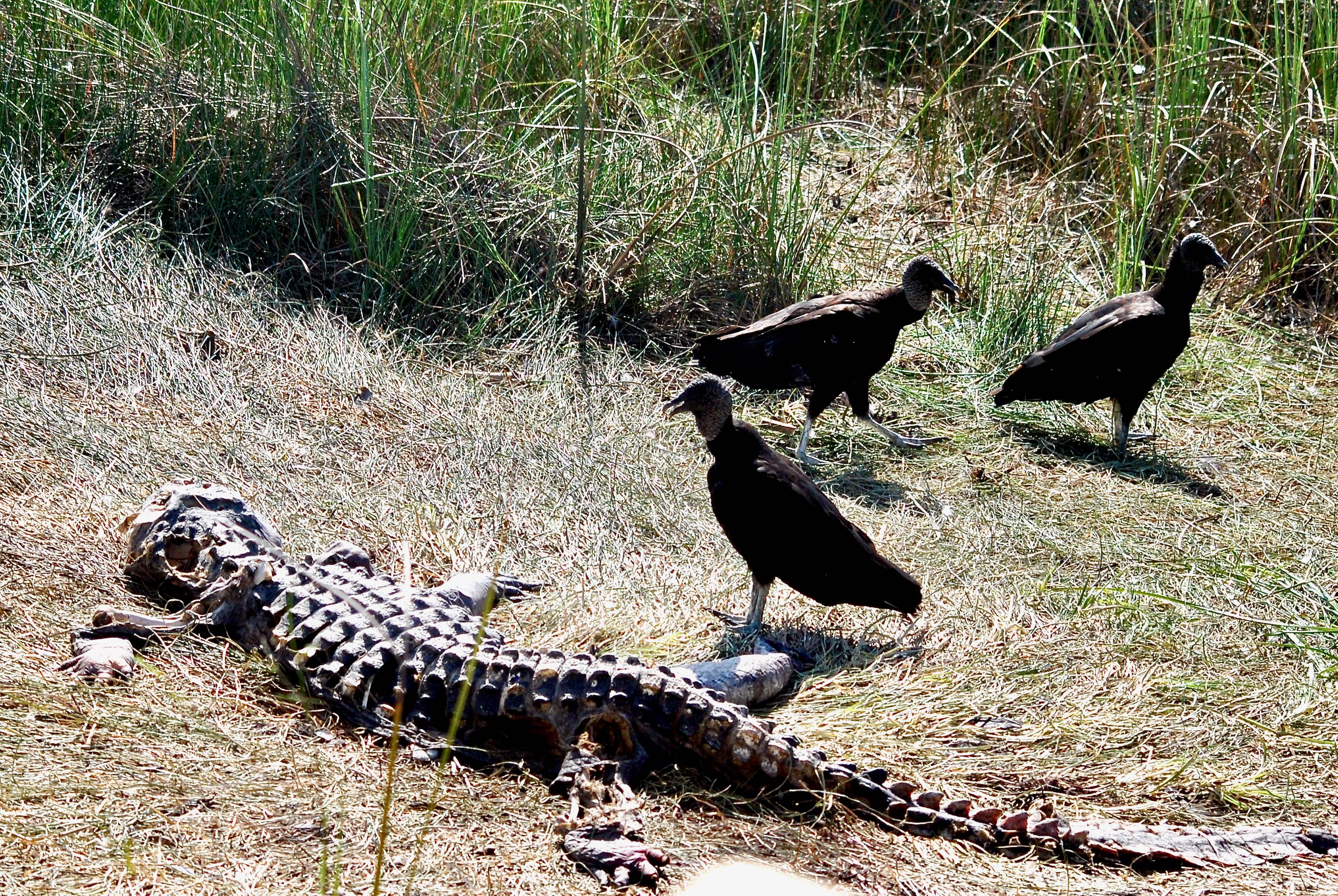
Black vulture, photographed at Shark Valley, Everglades National Park, Miami-Dade County, in May 2015.
Black vultures, Coragyps atratus, aren't quite as numerous as their cousins, the turkey vulture, but it's hardly a rare sight to see a few cleaning up some road kill.
Turkey vultures outnumber them in the United States, but blacks are more numerous in the western hemisphere thanks to their much greater range that stretches from southern New England through the Southeastern United States, through Mexico, Central America to Chile and Argentina. They also inhabit a small chunk of the Southwestern U.S. Blacks living in the northern extremes of their range might migrate slightly south in winter, but generally they are year-round residents pretty much everywhere they're found, including Florida.
Like all vultures, they feast on dead stuff. Unlike other vultures, their sense of smell isn't very good, which can be a handicap when trying to find a nice, tasty carcass. They make up for it with their eyes — soaring high in hot columns of air called thermals to spot and then follow the more sensitively-nostraled turkey vultures to a meal. Turkey vultures aren't the sharing kind, and are more than capable of fending off a black one on one. But blacks tend to show in numbers that overwhelm the more solitary turkey vulture.
Black vultures are all black, except for their featherless heads and faces, which are charcoal gray, and the undersides of their splayed wing tips, which are white. They have a compact body about two feet long, and a wingspan that reaches five feet. They teeter in flight, like turkey vultures, but the two species are easy to distinguish even at a distance by their wings. Turkey vultures have more white underneath than do the blacks and have red heads. Black vultures are fairly socialable birds, willing to share roosting sites and food with family members.
With nonrelatives, however, they become stingy, aggressively chasing them away from roosts and preventing them from following them to dinner. They will bite, peck and grapple with each other if necessary.
And while carrion is the biggest component of their diet, black vultures will prey on fish, skunks, turtle hatchlings, young livestock and incapacitated livestock. They will on occasion wade into shallow water to feast on a dead fish.
Black vultures are generally monogamous. Partners remain with each other throughout the year and throughout their lives. They don't build nests per se, but select sheltered sites — a tree cavity, an abandoned building, a covered place on the ground to lay their eggs. Females lay between one and three eggs, generally, which can take nearly 40 days to hatch. That's a lot of sitting, and both parents share the chore.
Once hatched, it can take two to three months or more for the offspring to develop enough to fly. Meanwhile, both parents feed the young with regurgitated goodies. Yum! Even after the offspring are fully flight capable, they will remain with their parents, who continue to feed them for months after they fledge.
Black vultures will hang out in open areas in woods, but have adapted well to the presence of humans. They will roost on utility polls along roads in hopes of finding some poor chicken or other animal that made an imprudent decision to cross from one side to another. They also will feed at dumpsters and gather in large numbers at landfills.
The black vulture population is considered secure, so much so they've been expanding their range northward in recent years. But wasn't the case in the not too distant past. Once tolerated around meat markets for their clean-up efforts, they became targets as people falsely began to associate them with disease. DDT also did its damage on the species.
According to Cornell Labs, the oldest recorded black vulture lived to be 25 years old. Although the black vulture and its relatives are birds of the western hemisphere, the oldest fossilized ancestor was dug up in Europe, also according to Cornell.
Black vultures are members of Cathartidae, the family of new world vultures and condors.
Shark Valley Everglades National Park



